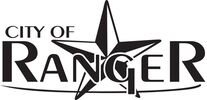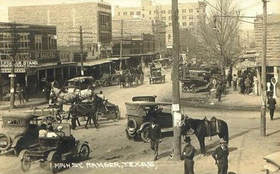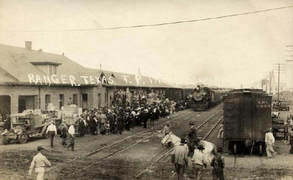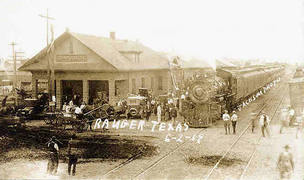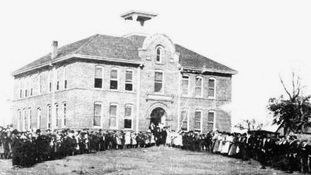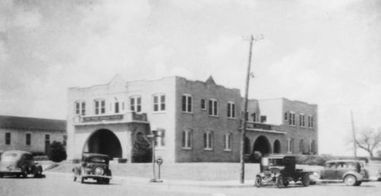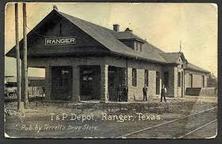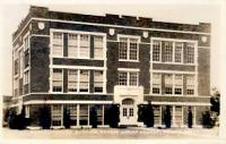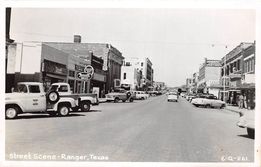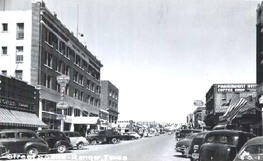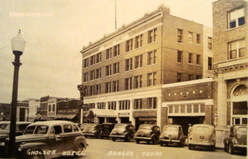"Roaring Ranger" History
“Ranger Texas, derived its name from the Texas Rangers, the first state-wide investigative law enforcement agency in Texas, based in the capital city of Austin who in the 1870’s had a camp in a valley about two miles northeast of Ranger on a branch of Palo Pinto Creek.
This camp was at the south end of the present Hagaman Lake.
During the 1920’s Ranger was a petroleum boomtown.
In October 1917 the famous McCleskey No. 1 came in, reaching a daily production of 1,700 barrels,
and began a mammoth oil boom that drastically changed Ranger and Eastland County.
As war raged in Europe, the Texas oilfield that was discovered halfway between Abilene and Dallas,
the J.H. McCleskey No 1, a “wildcat well” in Ranger made headlines around the world.
“Roaring Ranger” erupted in a geyser of oil, and revealed an oilfield that would help the Allies win World War I,
forming Ranger’s motto “The oil boom that won the war.” It earned the nickname “Roaring Ranger” as the area roared with oil rigs,
eventually producing in total 10,000 barrels of high grade oil per day. At the time, Ranger had railroad service through Wichita Falls and Fort Worth.
In 1982 the chamber of commerce established the Roaring Ranger Museum, in the old Ranger Train Depot,
to depict the history of the oil boom and the community.
The Ranger Airfield dates back to 1911. Pilot Amelia Earhart landed at the field in 1931 in her Pitcairn Autogyro.
The Ranger Airfield still hosts fly-ins and airshows today.
Ranger College, formerly Ranger Junior College, has been the home of a national football championship team in 1978
and has had rodeo championships, winning baseball, basketball and soccer programs.
Ranger College has produced numerous successful graduates.
Established in 1926, Ranger college is one of the state’s oldest two year colleges.
In 1980 Ranger had eighty-three businesses, a bank, and a population of 3,142.”
John Mathews
This camp was at the south end of the present Hagaman Lake.
During the 1920’s Ranger was a petroleum boomtown.
In October 1917 the famous McCleskey No. 1 came in, reaching a daily production of 1,700 barrels,
and began a mammoth oil boom that drastically changed Ranger and Eastland County.
As war raged in Europe, the Texas oilfield that was discovered halfway between Abilene and Dallas,
the J.H. McCleskey No 1, a “wildcat well” in Ranger made headlines around the world.
“Roaring Ranger” erupted in a geyser of oil, and revealed an oilfield that would help the Allies win World War I,
forming Ranger’s motto “The oil boom that won the war.” It earned the nickname “Roaring Ranger” as the area roared with oil rigs,
eventually producing in total 10,000 barrels of high grade oil per day. At the time, Ranger had railroad service through Wichita Falls and Fort Worth.
In 1982 the chamber of commerce established the Roaring Ranger Museum, in the old Ranger Train Depot,
to depict the history of the oil boom and the community.
The Ranger Airfield dates back to 1911. Pilot Amelia Earhart landed at the field in 1931 in her Pitcairn Autogyro.
The Ranger Airfield still hosts fly-ins and airshows today.
Ranger College, formerly Ranger Junior College, has been the home of a national football championship team in 1978
and has had rodeo championships, winning baseball, basketball and soccer programs.
Ranger College has produced numerous successful graduates.
Established in 1926, Ranger college is one of the state’s oldest two year colleges.
In 1980 Ranger had eighty-three businesses, a bank, and a population of 3,142.”
John Mathews
